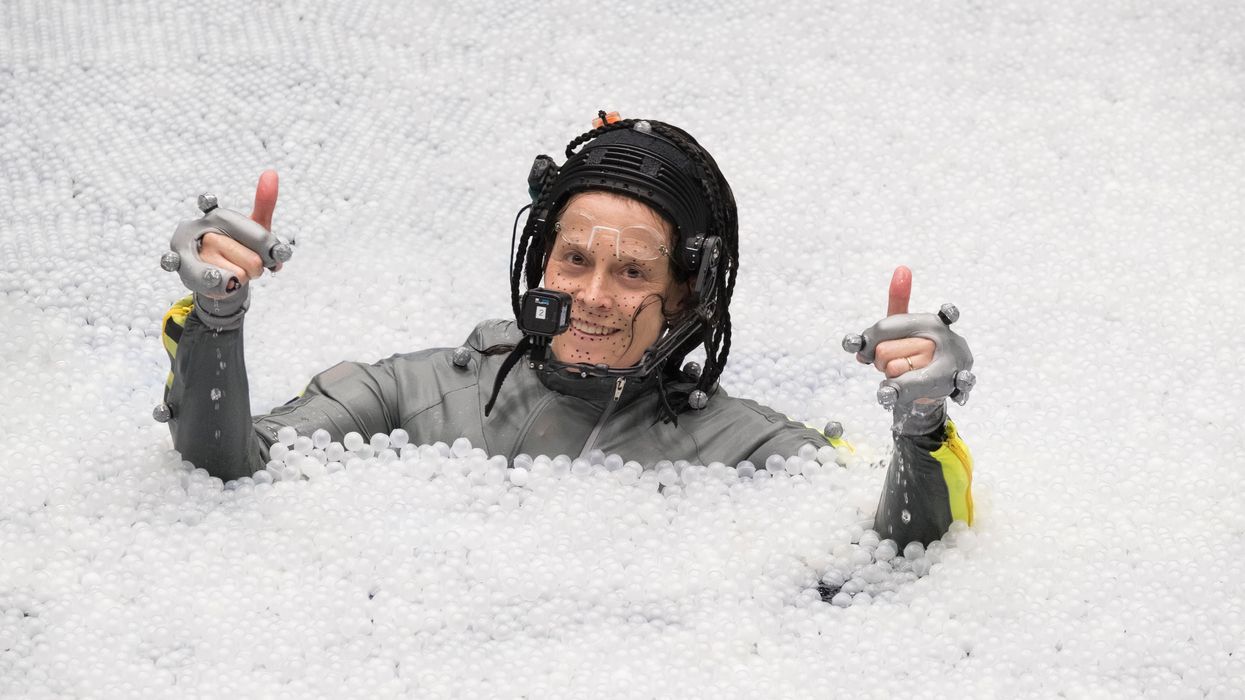Sigourney Weaver Had to Hold Her Breath for 6 Whole Minutes for ‘Avatar 2’ Stunts
Even behind Avatar's CGI, amazing things are happening.

This is hardly Sigourney Weaver's first James Cameron rodeo, so when the director said he wanted the second installment of Avatar to be an underwater extravaganza, she knew there would be extensive prep work to get herself ready for the role.
She had been there before.
But I'm not sure she saw herself with weights tied to her, suspended underwater, for over five minutes.
In a new interview with The New York Times, Weaver goes over some of the demanding work that was required to pull off her role in the film. It started with her deep-sea diving in Key West, Florida, and in Hawaii, where she would “recline on the ocean floor while manta rays glided over her.”
Sounds quaint.
But Weaver had endured Cameron's style long before her days on Pandora. In Aliens, Weaver was put to the test.
“It was a tough shoot, physically,” said Cameron, who wrote and directed the film. “She was running around this complicated set, and there were valves and handles sticking out, and she’d crack into them with her arm or shoulder or hip. I remember her just being black-and-blue after a couple of weeks.”
Producer Jon Landau, Sigourney Weaver, and Joel David Moore on the set of 'Avatar 2'Credit: Avatar - Twitter
So Avatar 2 was just another challenge for her to undertake.
The actress also trained with “elite military divers so that she could hold her breath, after a big gulp of supplemental oxygen, for more than six minutes.” The logic behind this was simple. The longer members could hold their breath, the more takes Cameron could film in a single period of time underwater.
But this was no small feat for the seventy-year-old actress.
“My hope is that what I receive from the universe is even more outrageous than anything I can think of,” Weaver said. “I don’t really say to myself, ‘Well, you can’t do this.’ Or, ‘You can’t do that.’ Let me at it! And we’ll see.”
She admitted to some nerves before the undertaking.
“I had some concerns,” Weaver continued, “But that’s what the training was for. And I really wanted to do it. I didn’t want anyone to think, ‘Oh, she’s old, she can’t do this.’”
The Times reports that “Weaver and other members of the cast had to learn not to squint or clamp their mouths shut—both natural reactions when you’re submerged—during take after take in a gigantic water tank. She had weights around her waist and professional divers who sped her back to the surface for air at brief, regular intervals.”
This sounds like an epic adventure. With all the CGI in these movies, it's easy to forget there are still actors performing these stunts and feats.
Avatar 2 is scheduled to arrive in theaters on Dec. 16, 2022. Avatar 3 will follow with a theatrical release on Dec. 20, 2024. The fourth and fifth films are due in 2026 and 2028.
Are you excited for this one? Let us know what you think in the comments.











